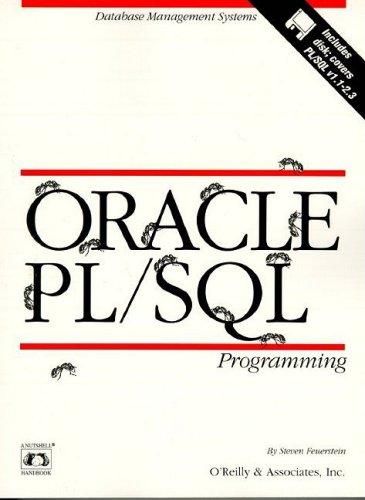Question
(C++)(Stock Market) Write a program to help a local stock trading company automate its systems. The company invests only in the stock market. At the
(C++)(Stock Market) Write a program to help a local stock trading company
automate its systems. The company invests only in the stock market. At the
end of each trading day, the company would like to generate and post the
listing of its stocks so that investors can see how their holdings performed
that day. We assume that the company invests in, say, 10 different stocks.
The desired output is to produce two listings, one sorted by stock symbol
and another sorted by percent gain from highest to lowest.
The input data is provided in a file in the following format:
symbol openingPrice closingPrice todayHigh todayLow
prevClose volume
For example, the sample data is:
MSMT 112.50 115.75 116.50 111.75 113.50 6723823
CBA 67.50 75.50 78.75 67.50 65.75 378233
.
.
.
The first line indicates that the stock symbol is MSMT, todays opening price was
112.50, the closing price was 115.75, todays high price was 116.50, todays low
price was 111.75, yesterdays closing price was 113.50, and the number of shares
currently being held is 6723823.
The listing sorted by stock symbols must be of the following form:
********* First Investor's Heaven **********
********* Financial Report **********
Stock Today Previous Percent
Symbol Open Close High Low Close Gain Volume
------ ----- ----- ----- ----- -------- ------- ------
ABC 123.45 130.95 132.00 125.00 120.50 8.67% 10000
AOLK 80.00 75.00 82.00 74.00 83.00 -9.64% 5000
CSCO 100.00 102.00 105.00 98.00 101.00 0.99% 25000
IBD 68.00 71.00 72.00 67.00 75.00 -5.33% 15000
MSET 120.00 140.00 145.00 140.00 115.00 21.74% 30920
Closing Assets: $9628300.00
-*-*-*-*-*-*-*-*-*-*-*-*-*-*-*-*-*-*-*-*-*-*-*
Develop this programming exercise in two steps. In the first step (part a), design and
implement a stock object. In the second step (part b), design and implement an
object to maintain a list of stocks.
a. (Stock Object) Design and implement the stock object. Call the class
that captures the various characteristics of a stock object stockType.
The main components of a stock are the stock symbol, stock price, and
number of shares. Moreover, we need to output the opening price,
closing price, high price, low price, previous price, and the percent
gain/loss for the day. These are also all the characteristics of a stock.
Therefore, the stock object should store all this information.
Perform the following operations on each stock object:
i. Set the stock information.
ii. Print the stock information.
iii. Show the different prices.
iv. Calculate and print the percent gain/loss.
v. Show the number of shares.
a.1. The natural ordering of the stock list is by stock symbol.
Overload the relational operators to compare two stock
objects by their symbols.
a.2. Overload the insertion operator, <<, for easy output.
a.3. Because the data is stored in a file, overload the stream
extraction operator, >>, for easy input.
For example, suppose infile is an ifstream object and the input file
was opened using the object infile. Further suppose that myStock is
a stock object. Then, the statement:
infile >> myStock;
reads the data from the input file and stores it in the object myStock.
(Note that this statement reads and stores the data in the relevant
components of myStock.)
b. Now that you have designed and implemented the class stockType
to implement a stock object in a program, it is time to create a list of
stock objects.
Let us call the class to implement a list of stock objects stockListType.
The class stockListType must be derived from the class
listType, which you designed and implemented in the previous
exercise. However, the class stockListType is a very specific class,
designed to create a list of stock objects. Therefore, the class
stockListType is no longer a template.
Add and/or overwrite the operations of the class listType to
implement the necessary operations on a stock list.
994 | Chapter 13: Overloading and Templates
The following statement derives the class stockListType from the
class listType.
class stockListType: public listType
{
member list
};
The member variables to hold the list elements, the length of the list,
and the max listSize were declared as protected in the class
listType. Therefore, these members can be directly accessed in the
class stockListType.
Because the company also requires you to produce the list ordered by
the percent gain/loss, you need to sort the stock list by this component.
However, you are not to physically sort the list by the component
percent gain/loss. Instead, you will provide a logical ordering with
respect to this component.
To do so, add a member variable, an array, to hold the indices of the
stock list ordered by the component percent gain/loss. Call this array
sortIndicesGainLoss. When printing the list ordered by the
component percent gain/loss, use the array sortIndicesGainLoss
to print the list. The elements of the array sortIndicesGainLoss
will tell which component of the stock list to print next.
c. Write a program that uses these two classes to automate the companys
analysis of stock data.
Step by Step Solution
There are 3 Steps involved in it
Step: 1

Get Instant Access to Expert-Tailored Solutions
See step-by-step solutions with expert insights and AI powered tools for academic success
Step: 2

Step: 3

Ace Your Homework with AI
Get the answers you need in no time with our AI-driven, step-by-step assistance
Get Started


